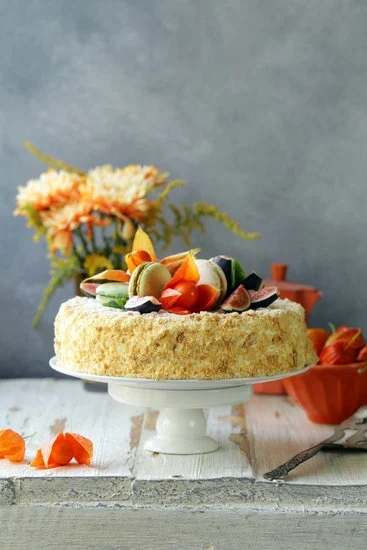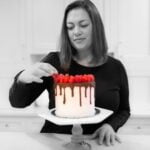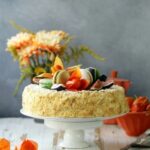Fondant has become a beloved staple in the world of cake decorating, known for its versatility and smooth finish that allows for endless creative possibilities. This pliable sugar paste has revolutionized the art of cake decorations, providing a professional-looking finish that is sure to impress any sweet tooth. Whether you’re a seasoned baker or just starting out, mastering the art of fondant can take your cake decorating skills to the next level.
While fondant may seem like a modern invention, its history dates back centuries and has evolved into various forms used in cake decorating today. From traditional rolled fondant to poured fondant, each type offers unique advantages and techniques for creating stunning cake designs. Understanding the differences between these types of fondant can help bakers choose the best option for their specific decoration needs.
In this article, we will delve into the fascinating world of fondant, exploring its origins, different types available for cake decorations, as well as the pros and cons of using fondant. Additionally, we will provide valuable tips and tricks on working with fondant, creative ideas for cake decoration using this versatile medium, essential tools every baker should have in their arsenal, and even a DIY recipe for making your own fondant from scratch.
So grab your rolling pin and let’s embark on a sweet adventure with fondant.
History of Fondant in Cake Decorating
Fondant has a rich history in the world of cake decorating, with its origins tracing back to ancient Egypt and even medieval Europe. In ancient times, those with wealth and status would adorn their desserts with a sweet paste made from honey, sugar, and fruit juices. This paste evolved through the centuries into what we now know as fondant, a versatile and pliable icing that has become a staple in cake decorating.
One key point in the history of fondant was its use as a modeling medium for intricate sugar sculptures known as sugar paste or gum paste. These exquisite decorations were popularized during the Renaissance period when European royalty and aristocrats used them to showcase their wealth and sophistication. Fondant became synonymous with elegance and artistry in cake decorating, leading to its widespread adoption by bakers around the world.
In modern times, fondant has become a go-to choice for professional bakers and home decorators alike due to its smooth finish and ability to hold intricate shapes. The development of new techniques and tools has expanded the creative possibilities for using fondant in cake decorations. From elaborate wedding cakes to whimsical birthday creations, fondant offers endless opportunities for expressing creativity and making stunning edible works of art.
| Key Point | Detail |
|---|---|
| Origins | Fondant traces back to ancient Egypt and medieval Europe |
| Renaissance Period | Fondant used for intricate sugar sculptures by European royalty |
| Modern Times | Fondant is popular for its smooth finish and creative possibilities in cake decorations |
Different Types of Fondant for Cake Decorations
Fondant is a versatile and popular choice for cake decorations due to its smooth and flawless finish. There are two main types of fondant commonly used in cake decorating: rolled fondant and poured fondant.
Rolled Fondant
Rolled fondant is the most commonly used type of fondant for covering cakes. It is made from sugar, water, gelatin, and glycerin, giving it a pliable texture that can be rolled out into thin sheets. Rolled fondant is ideal for creating intricate designs and shapes on cakes, as it can easily be molded and sculpted. This type of fondant is also available in a variety of colors and flavors, making it a versatile choice for cake decorators.
Poured Fondant
Poured fondant, on the other hand, has a pourable consistency similar to icing or glaze. It is typically made from sugar, corn syrup, and water, creating a smooth and glossy finish when applied to cakes.
Poured fondant is often used for filling pastries or covering petit fours due to its liquid nature. While it may not be as commonly used for elaborate cake decorations compared to rolled fondant, poured fondant provides a quick and easy way to add a polished look to baked goods.
When choosing between rolled fondant and poured fondant for cake decorations, consider the design you want to achieve and the level of detail required. Rolled fondant offers more flexibility in shaping intricate designs, while poured fondant provides a simpler solution for achieving a smooth finish on cakes or pastries. Experimenting with both types of fondants can help you discover which works best for your specific decorating needs.
Pros and Cons of Using Fondant for Cake Decorations
Fondant has become a popular choice for cake decorations due to its smooth and flawless finish that allows for intricate designs and creativity. One of the main advantages of using fondant is its versatility – it can be rolled out into thin sheets for covering cakes or molded into various shapes and figures for detailed decorations.
Fondant also provides a clean canvas for adding colors and textures, making it a favorite among bakers and cake decorators looking to achieve professional-looking results.
Pros of Using Fondant
One major benefit of using fondant for cake decorations is its ability to create sharp edges and smooth surfaces, giving cakes a polished and elegant appearance. Fondant is also great for intricate detailing, allowing decorators to sculpt realistic flowers, figures, and other designs with precision. Additionally, fondant acts as a barrier that helps seal in moisture, keeping cakes fresh and moist for longer periods compared to traditional buttercream frosting.
Another advantage of using fondant is its versatility in terms of flavor options. Fondant can be flavored with extracts or oils to complement the cake flavor, such as vanilla, almond, or citrus. This allows bakers to customize the taste of their creations while still enjoying the benefits of working with fondant. Additionally, fondant provides a stable base for attaching additional decorations such as edible pearls, sugar flowers, or fondant embellishments.
Cons of Using Fondant
While fondant offers numerous benefits for cake decorating, there are some drawbacks to consider as well. One common concern with fondant is its taste – some people find commercial fondants too sweet or lacking in flavor compared to other frosting options like buttercream. However, this can be easily remedied by making homemade fondant with quality ingredients and flavorings tailored to personal preferences.
Another potential downside of using fondant is its tendency to dry out quickly when exposed to air, which can make it challenging to work with during long decorating sessions. To prevent this issue, decorators can cover unused fondant with plastic wrap or store it in an airtight container when not in use.
Additionally, the cost of purchasing pre-made fondants may be higher than traditional frosting options like buttercream; however, making your own homemade fondant can be a more cost-effective alternative while still providing excellent results in cake decorating efforts.
Tips and Tricks for Working With Fondant
Fondant is a versatile and popular choice for cake decorations due to its smooth finish and ability to be shaped into intricate designs. Whether you are a novice baker or an experienced cake decorator, working with fondant requires some tips and tricks to achieve the best results. One of the essential skills when working with fondant is learning how to roll it out properly.
To prevent sticking, dust your work surface with powdered sugar or cornstarch before rolling out the fondant. Use a rolling pin to gently roll out the fondant into a thin, even layer.
Once you have rolled out the fondant, shaping it into different forms is where your creativity can truly shine. Fondant can be molded and sculpted into various shapes such as flowers, figurines, or geometric patterns. To create detailed decorations, invest in tools like fondant cutters, shaping tools, and embossing mats. These tools will help you achieve clean lines and precise details in your fondant decorations.
After completing your cake decorations, proper storage of any leftover fondant is crucial to prevent it from drying out and becoming unusable. Wrap any unused fondant tightly in plastic wrap or a resealable bag to keep it airtight. Store it in a cool, dry place away from direct sunlight or heat sources. If your fondant becomes too dry or hard while working with it, add a small amount of vegetable shortening or glycerin to restore its elasticity and pliability.
| Tips for Working With Fondant | How-to Instructions |
|---|---|
| Rolling Out Fondant | Dust work surface with powdered sugar before rolling |
| Shaping Fondant | Use shaping tools for detailed decorations |
| Storing Fondant | Wrap tightly in plastic wrap and store in cool place |
By mastering the art of rolling, shaping, and storing fondant correctly, you can elevate your cake decorating skills and create stunning designs that will impress your friends and family. Experiment with different techniques and let your imagination run wild when using fondant to decorate cakes for any occasion-from birthdays to weddings to holidays. With practice and patience, you’ll soon become a pro at working with this versatile cake decoration medium.
Creative Cake Decoration Ideas Using Fondant
Fondant is a versatile and popular choice for cake decorations due to its smooth texture and ability to be molded into intricate designs. When it comes to creative cake decoration ideas using fondant, the possibilities are endless. One of the most common uses of fondant is to create lifelike flowers, such as roses, daisies, or orchids, which can add a beautiful and elegant touch to any cake.
Another fun and creative idea for using fondant in cake decorating is to make miniature figurines or characters to place on top of cakes. From adorable animals to beloved cartoon characters, fondant allows bakers to bring their imagination to life in edible form. Sculpting with fondant gives decorators the freedom to customize cakes for any occasion, whether it be birthdays, weddings, or holidays.
Additionally, incorporating different colors and textures of fondant can take cake decorations to the next level. By layering colored fondant or using techniques like marbling or embossing, decorators can create visually stunning cakes that are sure to impress. The versatility of fondant makes it a favorite among bakers looking to add a unique and professional touch to their creations.
Fondant Tools and Equipment Every Baker Needs for Cake Decorating
When it comes to cake decorations fondant, having the right tools and equipment can make all the difference in creating beautiful and professional-looking designs. Here is a list of essential items every baker needs to have when working with fondant:
- Rolled Fondant: The base ingredient for fondant decorations, this smooth and pliable icing is essential for covering cakes and creating intricate designs.
- Fondant Smoother: This tool helps to flatten and smooth out the fondant over the cake, ensuring a seamless finish.
- Rolling Pin: A non-stick rolling pin is key for rolling out fondant to the desired thickness before placing it on the cake.
- Cutting Tools: From sharp knives to pizza cutters or even specialized fondant cutting tools, having the right cutting instruments will help create clean lines and precise shapes in your decorations.
- Embossing Tools: These tools add texture and details to your fondant creations, allowing you to customize your designs further.
Having a well-equipped toolbox will not only streamline your creative process but also ensure that your cake decorations turn out exactly as you envision them. Investing in quality tools and equipment will ultimately save you time and frustration when working with fondant.
In addition to these basic tools, there are some specialized items that can take your cake decorating skills to the next level. Consider adding these accessories to your collection:
- Fondant Extruder: Perfect for creating ropes, borders, or intricate patterns with ease.
- Molds and Cutters: These allow you to quickly create uniform shapes or elaborate designs without having to hand-cut each detail.
- Dusting Powders: Used for coloring fondant or dusting surfaces, these powders come in various shades and add a touch of shimmer or matte finish to your decorations.
By investing in high-quality tools and equipment specifically designed for working with fondant, you’ll be better equipped to bring your creative visions to life when decorating cakes with this versatile medium.
How to Make Your Own Fondant for Cake Decorations
Fondant has become a popular choice for cake decorations due to its smooth and polished finish, making it ideal for creating intricate designs and accents on cakes. While store-bought fondant is readily available, many bakers prefer making their own fondant from scratch for a more personalized touch.
Making your own fondant allows you to control the flavor, color, and consistency of the final product. Here is a step-by-step guide on how to make your own fondant for cake decorations:
1. Ingredients: To make homemade fondant, you will need confectioners’ sugar, unflavored gelatin, water, glucose or corn syrup, glycerin, and flavoring (such as vanilla extract). You can also add food coloring if you desire a specific color for your fondant.
2. Preparation: Start by blooming the gelatin in water according to the package instructions. Then combine glucose or corn syrup with glycerin in a saucepan over low heat until well mixed. Add the bloomed gelatin mixture into the saucepan and stir until fully dissolved.
3. Mixing: In a large bowl, sift confectioners’ sugar and create a well in the center before pouring the liquid ingredients into it. Stir until it forms a sticky dough-like consistency. Knead the fondant on a clean surface dusted with confectioners’ sugar until smooth and pliable.
4. Storage: Wrap the fondant tightly in plastic wrap and store it in an airtight container at room temperature for up to two weeks. If not using immediately, refrigerate but allow it to come back to room temperature before using.
By making your own fondant for cake decorations, you can customize it to suit your taste preferences and ensure that your creations have that personal touch that sets them apart from store-bought options. Experiment with different flavors and colors to make unique cake decorations that are sure to impress any guest or client.
Fondant vs Buttercream
Fondant has become a popular choice for cake decorations due to its smooth and elegant finish. Its versatility in shaping and coloring makes it a favorite among bakers and cake decorators alike. As mentioned earlier, there are two main types of fondant used for cake decorations: Rolled Fondant and Poured Fondant. Each type has its own unique qualities and can create stunning results when applied correctly.
While fondant offers a professional look to cakes, it also comes with its own set of pros and cons. The smooth finish of fondant allows for intricate designs and creative detailing that may be difficult to achieve with other decorating techniques.
On the downside, some may find the taste of fondant too sweet or prefer traditional buttercream frosting for its flavor. However, with practice and the right techniques, bakers can master the art of working with fondant to create visually appealing cakes that taste just as good as they look.
In conclusion, whether you choose fondant or buttercream for your cake decorations ultimately depends on your personal preference, skill level, and the desired aesthetic for your creation. Both techniques offer unique advantages and can be combined or used separately to achieve various design styles. With the right tools, tips, and creative ideas in mind, you can elevate your cake decorating skills using fondant to create show-stopping masterpieces that will impress any audience.
Frequently Asked Questions
How Do You Put Fondant Decorations on a Cake?
Fondant decorations can be attached to a cake using a small amount of water or edible glue. Simply brush the back of the decoration with water and gently press it onto the cake.
How Far in Advance Can You Make Fondant Decorations for a Cake?
Fondant decorations can be made several days in advance, even up to one week ahead of time if stored properly. To keep them fresh, store them in an airtight container at room temperature.
Can You Put Fondant Directly on a Cake?
Yes, fondant can be placed directly on a cake as long as the surface of the cake is smooth and free from crumbs or frosting bumps. Applying a thin layer of buttercream or ganache can help the fondant adhere better to the cake.

Welcome to our cake decorating blog! My name is Destiny Flores, and I am the proud owner of a cake decorating business named Cake Karma. Our mission is to provide delicious, beautiful cakes for all occasions. We specialize in creating custom cakes that are tailored specifically to each customer’s individual needs and tastes.





